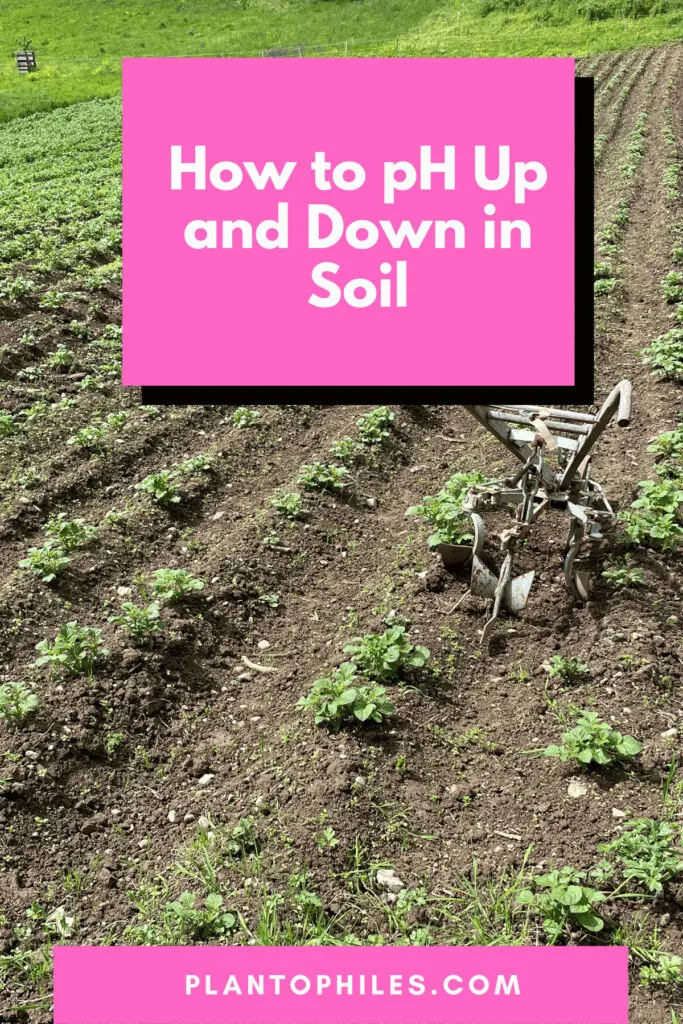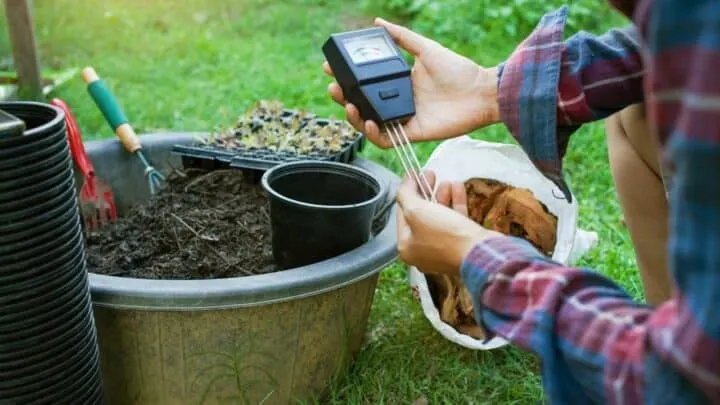Did you learn about the importance of soil pH for nutrient intake, or did you measure your soil pH? Now you want to know how to pH Up and down in soil. This guide tells you everything you need to know in simple steps.
Managing soil pH is an essential aspect of every gardener. Different garden soils have different soil pH.
Similarly, different plants and crops perform best at varying soil pH levels.
Thus, increasing or lowering the soil pH is essential for maximum productivity.
On a pH scale of 0-14, a pH of 0 is very acidic, a pH of 14 is alkaline, and a pH of 7 is neutral.
The acidity level increases the closer you get to 0, while the alkalinity level increases the closer you reach 14.
Soil contains the overall aspects of plant growth. The right soil condition for maximum output includes nutrients, proper aeration, and the right pH levels.
Most plants are sensitive to pH, and proper adjustment is necessary for effective growth.
Do you wish to lower the alkalinity levels or increase the soil’s acidity levels? There are numerous tips available to pH up or pH down.
Table of Contents
How to pH up and down in soil?
First, you have to test the soil pH. Add a base to the soil using baking soda, ash, or lime to increase its pH level. To decrease the soil’s pH level, add manure. You can also use aluminum sulfate or sulfur to lower soil pH levels.

Steps in Raising or Lowering Soil pH Levels
Before deciding on how to raise or lower the pH, there is a need to understand first the pH levels of the soil.
If you discover that the soil is very acidic for the crops you want to plant, you can increase the pH level by injecting a base into the soil.
The most commonly used base for raising soil pH includes limestone, ash, or baking soda, which can also be added to the soil.
However, if the soil’s pH level is too high and needs to be down to equilibrium or near equilibrium, manure can help achieve the desired pH levels.
Alternatively, you can incorporate sulfur or aluminum sulfate.
1. Soil evaluation
The first step before managing your soil pH is always to examine it. Though it is possible to see the effect of soil pH on the crops, it is always best to test to be certain, according to the University of Maryland.
It could be detrimental to your crops if you decide to lower the pH while the soil is already acidic instead of increasing it based on unhealthy changes exhibited by the crops.
Soil evaluation also involves determining the type of soil. If you are not sure about the type of soil in your garden, it is essential to conduct an assessment.
This process will help determine other soil properties like the soil drainage, dryness properties and whether it is clumpy or loose.
For the experienced gardener, it is easy to tell the soil type through simply touching and seeing.
However, if you are new to farming, it is always best to conduct a test.
2. Test soil and water pH
In this step, you will check the soil and water pH since they affect the crops.
While pH test strips and electronic meters can give conclusive results, it is essential to seek the expertise of a professional.
When testing water pH, it becomes easy to use a strip or a pH meter. I measure the pH level for my hydroponics system almost daily.
Generally, tap water is always alkaline, increasing the soil’s alkalinity. However, if the soil contains rainwater, it will be more acidic after testing.
Thus, if you are in a state that receives a lot of rainfall and wants to achieve the alkalinity of the water in the soil, consider using compounds that raise the soil pH.
3. Determine the plants or crops you want to grow
Now that you know the soil pH, what do you want to plant, among other properties? The type of crop will determine the soil pH.
In the United States, the soil pH ranges between 3.5 and 10. In high rainfall states, the PH is about 5 and 7, while in drier states, it is about 6.5 to 9.
If you want to plant strawberries in any of these states, lower the soil PH as they do well in acidic soils.
However, most other fruits and vegetables do well in slightly acidic soils.
4. How to pH up or raise pH
After testing, if you discover your soil has high acidity levels, it is advisable to grow crops like strawberries.
However, if you are considering growing vegetables, consider increasing the pH level to about equilibrium.
How do you increase the pH levels of the soil? Add base elements or compounds to the soil.
The type of base you choose depends on the acidity levels and how fast the effect is realized. Most of these base compounds contain limestone in powder form.
The compounds can be found at any agricultural selling store.
Limestone comes in different forms, including pellets, granules, pulverized, and hydrated forms.
The choice will heavily depend on the soil’s moisture levels, the soil type, and how fast you need to effect change.
The lime pellets and granules are convenient to apply but take longer to raise the pH levels effectively.
On the other hand, pulverized lime is easily absorbed into the soil but regularly clogs the applicator.
Thus, hydrated lime is the best option for easy application and effectively raising the soil pH.
Would you prefer a natural and more cost-friendly method of raising the soil pH? Consider using wood ash or baking soda.
While these two still yield the desired result, they take much time to raise the pH levels effectively.
Additionally, go for potassium and calcium, among other micronutrients, in the soil. However, be careful not to be in contact with the roots as it can damage them.
5. How to pH down or lower pH
Since most crops thrive under slightly acidic soil, you must lower the pH.
If you plan to practice organic farming, using natural materials is the best way to lower the pH.
While they take time, the most common natural compounds include manure, pine needles, and composite.
Alternatively, you can use sulfur or aluminum sulfate.
Aluminum sulfate has been recognized as the most effective way of acidifying the soil due to the chemical reaction of aluminum.
Frequently Asked Questions About How To pH Up And Down In Soil
What is the fastest way of raising soil pH?
The use of limestone can raise the pH of highly acidic soil. Hydrated lime is more effective as it is absorbed into the soil immediately.
Does a rise in alkalinity raise pH?
An increase in the alkalinity of the soil or water subsequently increases the pH.
Conclusion
Several factors determine increasing and lowering the soil’s pH level.
How much you can increase or lower the pH depends on the current pH levels of the soil and the crop you want to grow.
By following these soil pH management tips, you will achieve your crops’ desired soil pH levels.

Daniel has been a plant enthusiast for over 20 years. He owns hundreds of houseplants and prepares for the chili growing seasons yearly with great anticipation. His favorite plants are plant species in the Araceae family, such as Monstera, Philodendron, and Anthurium. He also loves gardening and is growing hot peppers, tomatoes, and many more vegetables.


